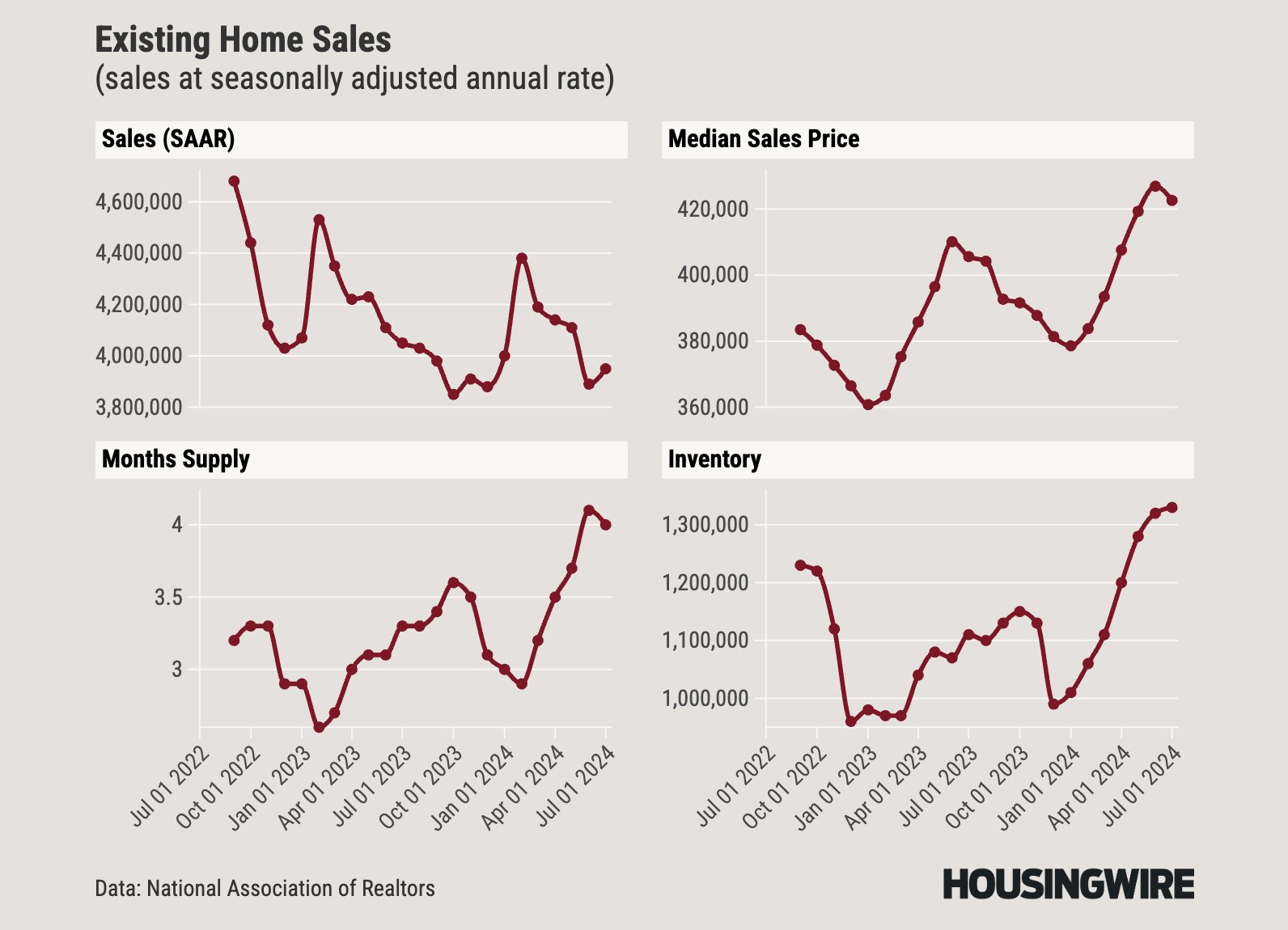How did existing home sales grow with all the recent negative press about demand? We were told lower mortgage rates wouldn’t affect demand positively. However, if you track the forward-looking indicators, it can explain this bounce in demand.
First, we have to put context into the bounce: we are working from the lowest levels ever in home sales, so any small, minor move in purchase application data can bounce sales from here. Purchase application data for the last 11 weeks have been slightly positive, with six positive and five negative prints. However, the more significant push in demand came in June when we had three straight weeks of positive application data prints.
That’s all that happened here — nothing more than that. However, let’s look at the entire report for clues about what is happening today. The charts below show the critical data lines in the report.
From NAR: Total existing-home sales – completed transactions that include single-family homes, townhomes, condominiums and co-ops – ascended 1.3% from June to a seasonally adjusted annual rate of 3.95 million in July. Year-over-year, sales fell 2.5% (down from 4.05 million in July 2023).
We got a slight bump in demand in today’s report, which shouldn’t have been a surprise, as pending home sales last month had a surprise beat of estimates. When people were expecting a negative print, they got a positive one. But let’s be honest: the pending home sales data was working from the lowest levels ever before that beat. I don’t see anything in our Housing Market Tracker data that would warrant any big beats in future home sales prints. However, the last two years have shown that sales haven’t had a really big drop below this 4 million level post 1996.
From NAR: Total housing inventory registered at the end of July was 1.33 million units, up 0.8% from June and 19.8% from one year ago (1.11 million).
Inventory is growing yearly and we are getting closer to a level where I can feel good about it via the NAR data, which differs from our own Altos Research data. If inventory can trend between 1.52-1.93 million with at least a four-month supply, all my low inventory talk will disappear. Historically speaking, going back decades, active inventory is traditionally between 2-2.5 million. The housing bubble peaked in 2007 at 4 million so with our current level at 1.33 million, we aren’t back to normal levels yet.
NAR: First-time buyers were responsible for 29% of sales in July; Individual investors purchased 13% of homes; All-cash sales accounted for 27% of transactions; Distressed sales represented 1% of sales; Properties typically remained on the market for 24 days.
One of the reasons that I am happier about the 2024 housing data is that inventory is growing and the days on the market are increasing year over year. Last year, we were at 20 days at this time of year, and today we are at 24 days. Nothing good happens in the housing market when the days on the market are 19 days or less — that would mean we have a massive credit sales boom or we simply don’t have enough homes available. It’s just too many people chasing too few homes.
All in all, the existing home sales report came in as I expected; the only data line that looked off to me was that the monthly supply data fell from 4.1 months to 4.0 months. For the last two years, monthly supply levels peaked around October, so if we peaked in June this year, that would be a deviation from the recent norms. However, I encourage everyone to keep an eye on the tracker data and we will take all housing and economic data one day at a time.






